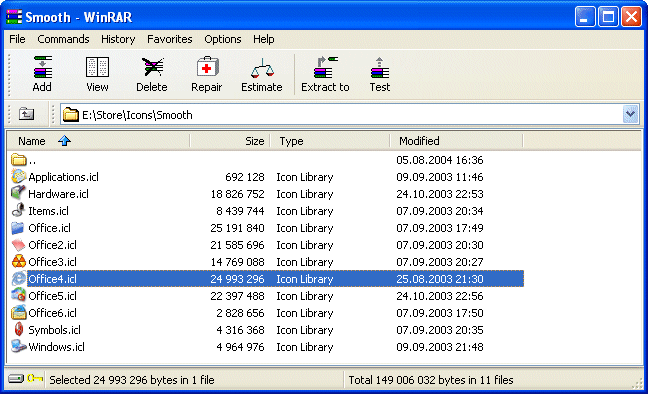The Digital Trojan Horse: How a Popular Archive Tool Became Russia's Gateway to Western Infrastructure
PRAGUE — For decades, WinRAR's distinctive interface has been as familiar to computer users as the Windows desktop itself. Yet between July 18-21, 2025, this ubiquitous archiving software became an unwitting accomplice in one of the most sophisticated cyberattacks targeting European and Canadian critical infrastructure in recent memory.

The revelation of CVE-2025-8088, a zero-day vulnerability with a severity score of 8.4 out of 10, exposes a troubling reality: the software tools we trust most can become the weapons used against us. Security researchers at ESET discovered that RomCom, a Russia-aligned hacking collective, had been exploiting this previously unknown flaw to infiltrate financial institutions, defense contractors, and logistics networks across the Atlantic.
What makes this breach particularly insidious is its method of delivery. The attackers crafted seemingly innocent job application documents, leveraging the human element of recruitment processes to bypass even sophisticated security protocols. When unsuspecting employees extracted these malicious RAR files, they unknowingly granted attackers persistent access to their organizations' most sensitive systems.

The Anatomy of Digital Deception
The technical sophistication of this attack reveals the evolving landscape of state-sponsored cybercrime. CVE-2025-8088 exploits a directory traversal vulnerability that allows malicious archives to forcibly place executable files into Windows system folders, particularly the Startup directory. This mechanism employs alternate data streams and deep relative directory paths to achieve what security experts describe as "surgical precision" in malware deployment.
A Directory Traversal, also known as a Path Traversal attack, is a web security vulnerability that allows an attacker to read arbitrary files on the server. Hackers exploit this flaw by manipulating file paths with "dot-dot-slash" (
../) sequences to navigate outside of the web root directory and access sensitive, restricted files.
ESET researchers documented the deployment of multiple backdoor variants, including SnipBot, RustyClaw, and Mythic agent, each designed for specific phases of the attack lifecycle. These tools grant attackers comprehensive access to compromised systems, enabling data exfiltration, lateral movement within networks, and the establishment of persistent command-and-control channels.
The choice of targets reflects strategic geopolitical considerations. RomCom, operating under aliases including Storm-0978 and Tropical Scorpius, has historically focused on government, military, and critical infrastructure organizations. This latest campaign expanded their scope to include energy sectors and humanitarian organizations with connections to Ukraine and NATO interests. Typical Target Distribution for State-Aligned Threat Actors like RomCom.
| Target Sector | Description of Threat Focus |
|---|---|
| Critical Infrastructure | This is the most frequently targeted sector by politically motivated cyberattacks. It includes industries such as energy, telecommunications, transportation, and healthcare, with attacks aiming to disrupt essential services. In 2023, there were 500 recorded incidents targeting critical infrastructure. Between January 2023 and January 2024, the energy, transportation, and telecommunications sectors were primary targets. |
| Government & Political Systems | State institutions and political systems are the second most common targets. These attacks often come from nation-state actors seeking strategic advantages through espionage or disruption of public services. The threat actor RomCom specifically targets military, government, and political organizations. |
| Healthcare | The healthcare sector is a significant target, accounting for 14.2% of all attacks on critical infrastructure. These cyberattacks include ransomware, theft of confidential patient data, and disruption of healthcare services. The RomCom threat actor has been observed targeting U.S.-based healthcare organizations that provide aid to Ukrainian refugees. |
The Silent Vulnerability Window
Perhaps most concerning is the revelation that this vulnerability remained undetected for an unknown period before ESET's discovery. WinRAR, despite its widespread adoption across enterprise environments, lacks automatic update mechanisms—a design choice that left countless organizations vulnerable even after the patch became available on July 30, 2025. Timeline illustrating the 'vulnerability window' - the critical period between a vulnerability's exploitation, its public disclosure, and widespread patch application.
| Event | Average Timeline | Notes |
|---|---|---|
| Zero-Day Exploit | Occurs before a patch is available | In 2023, 70% of exploited vulnerabilities were zero-days, meaning they were exploited before a fix was made public. The average lifespan of a zero-day exploit before public disclosure can be as long as 7 years. |
| Public Disclosure to Active Exploit (Time-to-Exploit) | 5 days (in 2023) | This period has shrunk dramatically from 32 days in 2022 and 63 days between 2018-2019. For n-day vulnerabilities (exploited after a patch is available), 12% were exploited within a day and 56% within a month in 2023. |
| Time to Remediate Critical Vulnerabilities | 4.5 months (median) | This is the average time it takes for organizations to apply patches for critical vulnerabilities, highlighting a significant lag in patch application. High severity vulnerabilities take over 9 months to remediate. |
| Gap Between Exploit Publication and CVE Assignment | 23 days | There is an average 23-day gap between the publication of an exploit and its assignment of a Common Vulnerabilities and Exposures (CVE) identifier, giving attackers a head start. |
Industry analysts suggest this incident highlights a fundamental weakness in how organizations manage software dependencies. Many enterprises running WinRAR version 7.12 and earlier remain vulnerable simply because manual update processes often lag behind threat emergence by weeks or months.
The vulnerability affects not only standalone WinRAR installations but also embedded UnRAR.dll components used by third-party software, creating a complex web of potential entry points that security teams must now systematically address.
Software supply chain security addresses the risks inherent in using third-party libraries and components to build applications. A vulnerability in just one embedded element, like the flaw found in
unrar.dll, can introduce a significant security risk to the entire software system that relies on it.
Beyond Technical Patches: Rethinking Digital Trust
This incident represents more than a isolated software vulnerability; it reflects the broader challenge of maintaining security in an interconnected digital ecosystem where trusted tools can become vectors for sophisticated attacks. The spearphishing methodology employed by RomCom demonstrates how psychological manipulation combines with technical exploitation to circumvent traditional security measures.
Security professionals increasingly recognize that human-centered attack vectors, such as job application lures, exploit organizational processes rather than purely technical vulnerabilities. This shift requires enterprises to reconsider not only their technical defenses but also their operational procedures for handling external communications.
The broader implications extend to supply chain security, as organizations must now evaluate the security posture of every software component in their environment, including seemingly benign utilities like archive managers that have become integral to daily operations.
Market Implications and Strategic Positioning
From an investment perspective, this incident may accelerate several cybersecurity market trends already gaining momentum. Organizations are likely to increase spending on endpoint detection and response (EDR) solutions capable of identifying behavioral anomalies rather than relying solely on signature-based detection methods.
The vulnerability also highlights the value proposition of zero-trust security architectures, which assume potential compromise and implement continuous verification mechanisms. Companies specializing in network segmentation, privileged access management, and automated patch management could see increased demand as organizations seek to minimize the impact of similar future incidents.
A Zero-Trust Security Architecture is a cybersecurity model built on the principle of "never trust, always verify." This framework abandons the idea of a trusted internal network, instead treating every access request as a potential threat that must be strictly authenticated and authorized before granting access to resources.
Market analysts suggest that cybersecurity insurance providers may begin implementing more stringent requirements around software update procedures and vulnerability management processes. This evolution could drive demand for automated asset discovery and patch management solutions that provide real-time visibility into an organization's security posture.
Additionally, the incident underscores the strategic importance of threat intelligence platforms capable of identifying emerging attack patterns and attributing activities to specific threat actors. Organizations with advanced threat hunting capabilities may find themselves better positioned to detect and respond to similar campaigns before significant damage occurs. Projected market growth for key cybersecurity sectors like Zero Trust, EDR, and automated patch management.
| Market Sector | 2023/2024 Market Size | Projected Market Size | Forecast Period | CAGR (Compound Annual Growth Rate) |
|---|---|---|---|---|
| Zero Trust Security | USD 36.35 billion (2024) | USD 124.50 billion | 2025-2032 | 16.7% |
| Endpoint Detection and Response (EDR) | USD 3.6 billion (2023) | USD 25.7 billion | 2024-2032 | 24.6% |
| Patch Management | USD 2.71 billion (2024) | USD 7.27 billion | 2025-2034 | 10.36% |
Charting the Path Forward
The WinRAR incident serves as a catalyst for broader discussions about software security in enterprise environments. While immediate remediation requires updating to version 7.13 or later, the long-term implications demand more fundamental changes in how organizations approach cybersecurity risk management.
Security experts recommend implementing application control mechanisms that restrict the execution of archive extraction tools to authorized users and monitored environments. This approach acknowledges that even patched software may contain undiscovered vulnerabilities that could be exploited by sophisticated threat actors.
The incident also reinforces the critical importance of employee training programs that address social engineering tactics specifically tailored to organizational recruitment processes. As threat actors continue to exploit human psychology alongside technical vulnerabilities, comprehensive security awareness becomes essential for maintaining organizational resilience.

Looking ahead, the convergence of geopolitical tensions and sophisticated cyber capabilities suggests that incidents like the RomCom campaign represent an evolution rather than an anomaly in the threat landscape. Organizations that recognize this shift and invest accordingly in both technical defenses and human-centered security measures may find themselves better positioned to navigate an increasingly complex digital security environment.
Investment analysis is based on current market conditions and historical patterns. Past performance does not guarantee future results. Readers should consult qualified financial advisors for personalized investment guidance.
